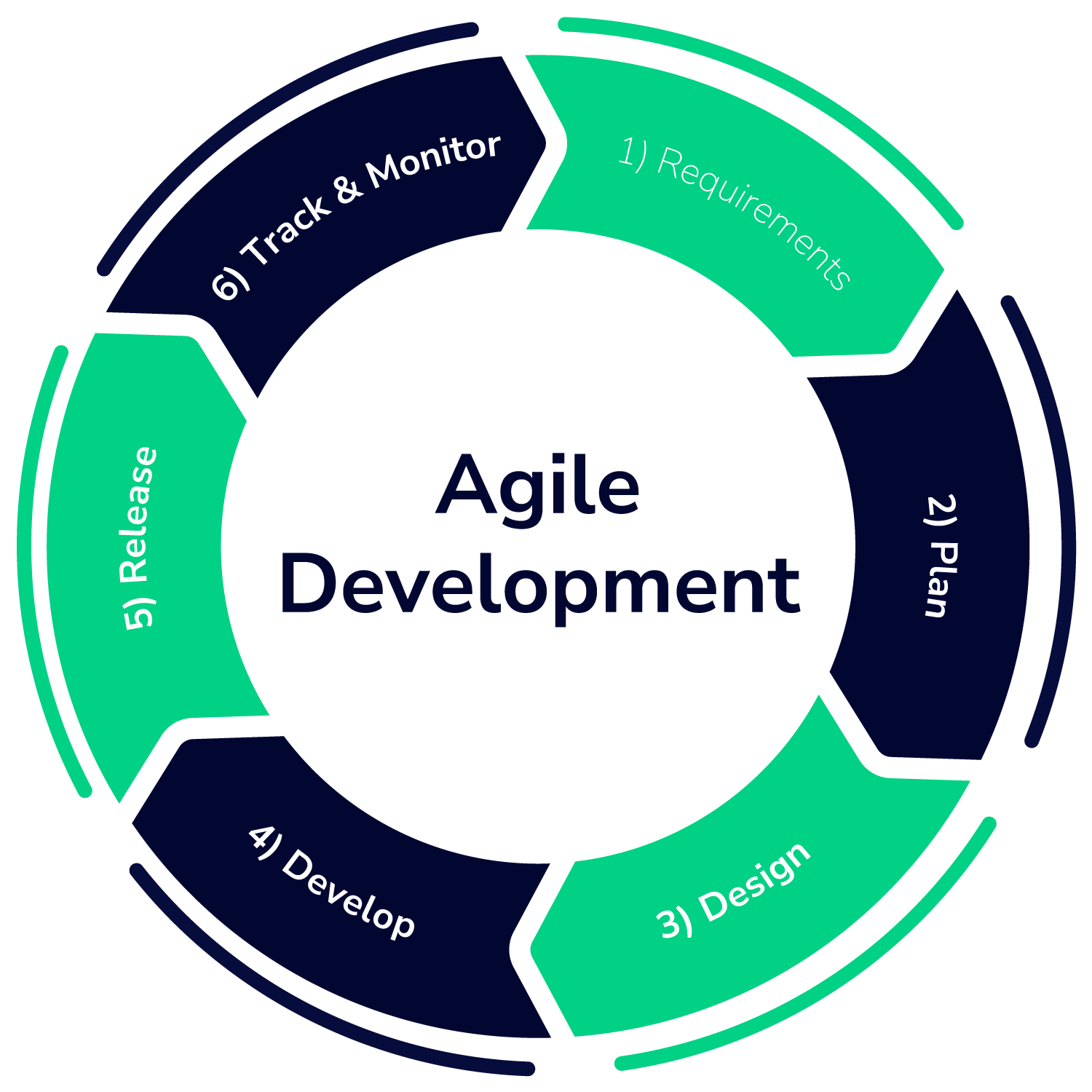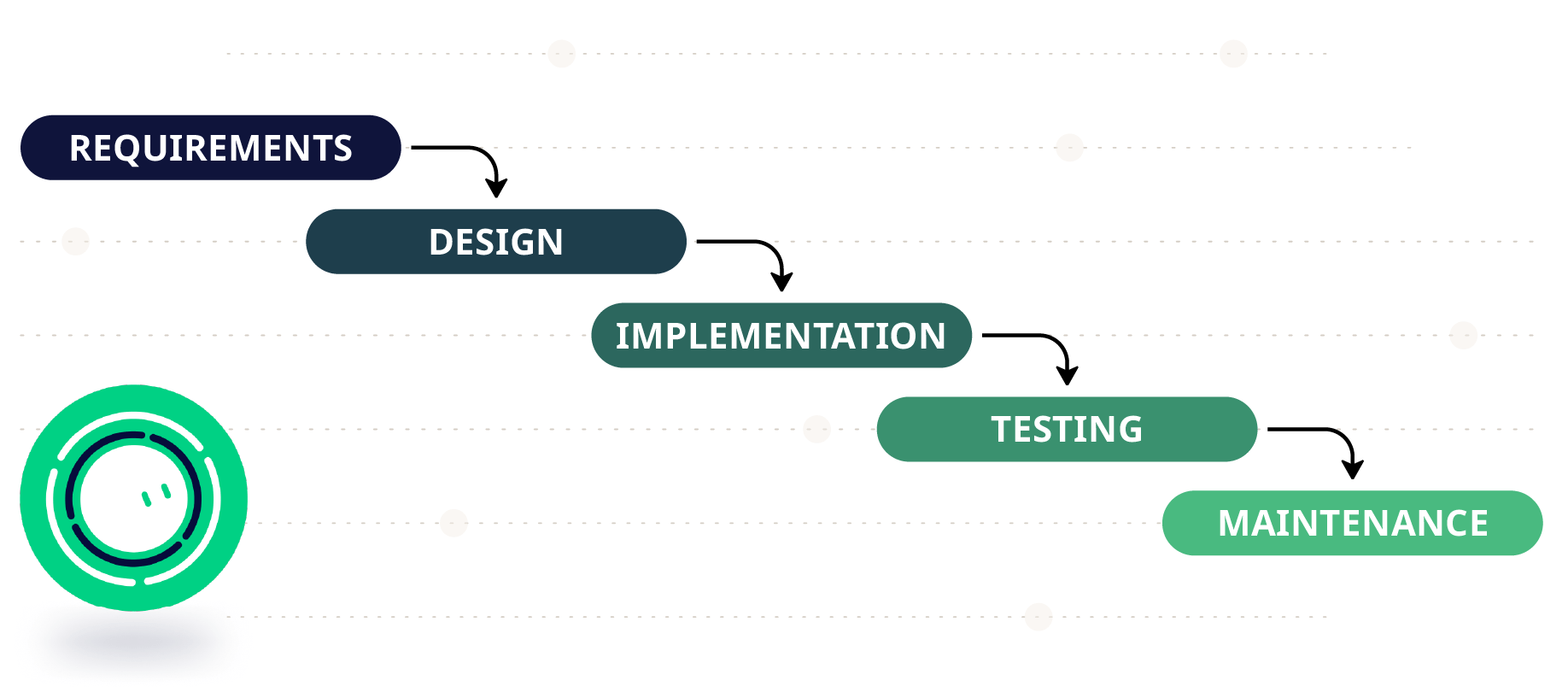Choosing the right methodology and tools is paramount to any software’s success. Waterfall and Agile, two distinct project management approaches, stand at the forefront of this decision-making process. Each offers unique advantages and challenges that significantly impact mobile app testing. In this article, we explore the fundamental differences between Waterfall and Agile methodologies. We’ll then discuss which is the best fit for the dynamic landscape of mobile app testing.
Waterfall Project Management
The Waterfall methodology is a linear and sequential approach to software development. In this structured framework, each phase of the project follows the preceding one. There is minimal room for iteration or flexibility. Invented in 1970 by Winston Royce, it was created for projects with highly defined timelines, clear end results, and leaves little room to adjust to unexpected issues. It was designed to work with input from initial stakeholders but was otherwise not collaborative in scope. Software releases were initially major events, spanning as long as two years, allowing for long time frames to completion.
When appropriate to the project, this traditional approach offers predictable steps and moves ever forward toward a clear end goal. This rigidity of this methodology continues to lend itself to clearly defined spaces, such the aerospace and auto industries. The five sequential stages of this approach are requirements, design, implementation, verification, and maintenance.
The Agile Methodology
Agile methodology was created in 2001 direct response to the challenges that the waterfall approach presented as software projects grew increasingly complex. It’s not hard to imagine how technology had advanced within a thirty-one year time span. Startups, lean teams, and multiple stakeholders with variable software familiarity became more involved in product development as the industry matured and diversified. In turn, this created projects that required fast, collaborative, highly flexible project management plans.
The five stages of this approach are ideation, development, testing, deployment, and operations. The agile approach is best used for projects that are continuous in nature and have end goals that are yet to be defined. With this methodology, projects can begin without fixed timelines, budget constraints, and incorporate ongoing feedback from stakeholders and users alike. While this approach is obviously used in the software industry, it can be found in other areas ranging from healthcare to manufacturing.

Mobile App Development: Fast and Collaborative
The first mobile app was created in 1997 before the agile process was defined (you may remember the addictive snake game on your Nokia phone). Since the concept’s inception, mobile apps have become pivotal parts of nearly everyone’s lives. From phone alarm clocks in the morning, to sleep trackers at night, these pieces of software shape our everyday lives. There are currently a shocking 8.93 million smartphone apps worldwide, with 3.553 million apps in the Google Play Store and 1.642 million in the Apple App Store.
With the glut of apps available, competition to stay relevant to users is fierce. Users have an extremely low tolerance for poor UIs, slow load times, glitchy features, or any other issue that may cause the slightest inconvenience. Because of these unrelenting standards app developers must spend an enormous amount of time ensuring their app provides a stellar user experience – every time, on every device.
To do this, app developers have rightfully relied on agile project management. Bug fixes and feature releases now move as fast as weekly. With agile, developers are able to integrate user and stakeholder feedback quickly.
Sofy: Built for Speed and Accuracy
Sofy was built with agile in mind. Built for continuous integration and deployment cycles, Sofy’s app testing service helps further cut down once manual processes. Get a demo with Sofy today to get started.










